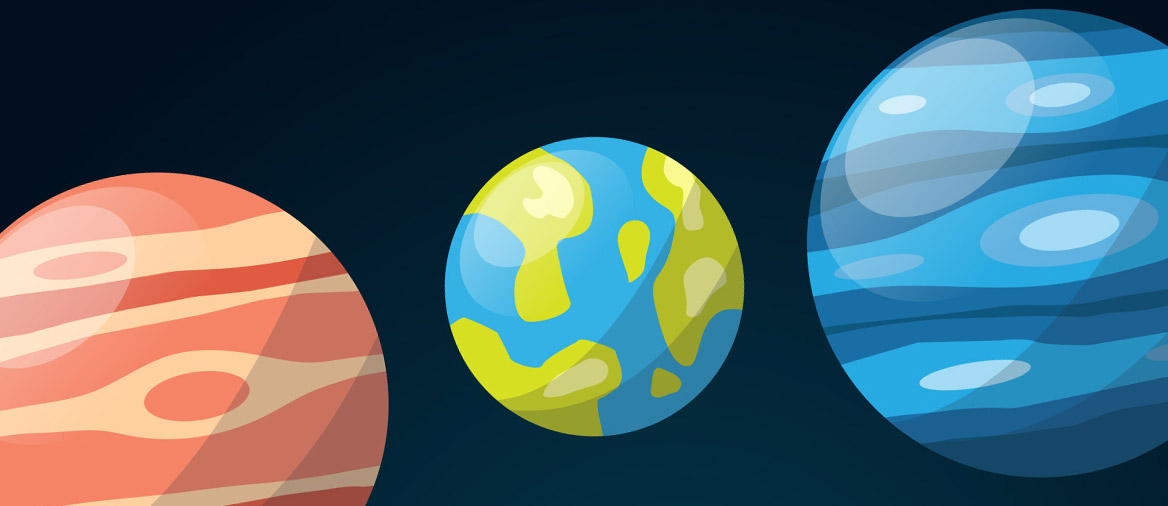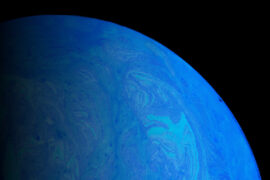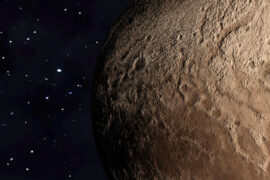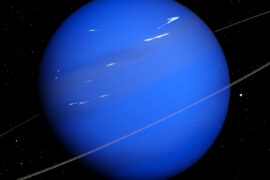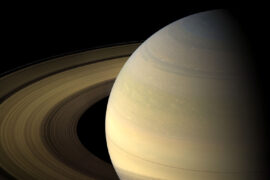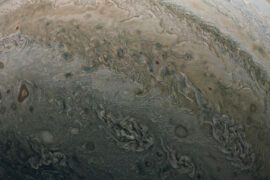We are all standing on a planet that is floating in space right now. We call it Earth and it is the home to all humans.
This is why planets are important to study and understand. Because maybe one day we’ll be able to travel to a different one and make that our new home. And maybe we’ll find one that already has other life forms. Wouldn’t that be really exciting?
In this article, I’ll explain some of the most interesting facts about planets in a way that is easy to read and understand. But first, let’s try to get a clearer picture of what a planet is because its definition can be confusing.
What is a planet? (explained for kids)
A planet is a big object in space that travels in circles around a star. For example, our planet, Earth, travels around the Sun and takes 365 days to complete one (one year).
The action of moving around a star in a circle is called “orbit”.
There are other objects that orbit stars, like meteors, comets, or even other stars. But not all of them are considered planets. A planet has to meet three requirements.
- A planet has to orbit a star
- A planet must be shaped like a sphere
- A planet must be the only large object in its “lane” around the Sun
If an object doesn’t meet all three requirements then it is classified as a different thing.
There are 8 planets in our Solar system. Their names are:
- Mercury
- Venus
- Earth
- Mars
- Jupiter
- Saturn
- Uranus
- Neptune
There are millions of other planets orbiting other stars in the universe. Every time you look at the sky and see the stars, it is very probable that many of the have their own planets, however, most of them are too far away for us to be able to see them. Thankfully, new technologies are starting to help us find them.
Planet facts for kids
1. All planets are shaped like a ball
One curious thing about all planets is that they are shaped like a ball or a marble.
This is not a coincidence, and it happens because, at a certain size, all objects start to take a spherical shape. The reason why this happens is gravity, the force by which a planet or other body draws objects toward its center.
Smaller objects like meteors and comets can have irregular shapes. This is one way to distinguish them from planets as being shaped like a sphere is one of the requirements to be a planet.
2. Some planets are made out of gas
Not every planet has a rocky, solid surface like ours. Some are almost entirely made out of gas!
If a ship were to fall into one of these planets, it would sink all the way to the center as if it was in a pool. Well, actually, it would probably be crushed way before getting there due to the enormous pressure but that’s a different story. The point is these planets don’t have a surface where you could stand or walk on.
There are four such planets in our Solar system. They are called “gas giants” and they are the four outer planets:
- Jupiter
- Saturn
- Uranus
- Neptune
3. All the planets in the Solar system have the same age
The planets in the Solar system are so different from each other that it is hard to believe they all share the same origin. But that’s exactly the case.
All the planets in the Solar system, including Earth formed more or less at the same time. This happened 4.6 billion years ago.
Even though all the planets formed out of the same disc of gas and dust, they have different compositions due to their location and how they are affected by the Sun and neighbor planets.
4. There is a limit to how big a planet can be
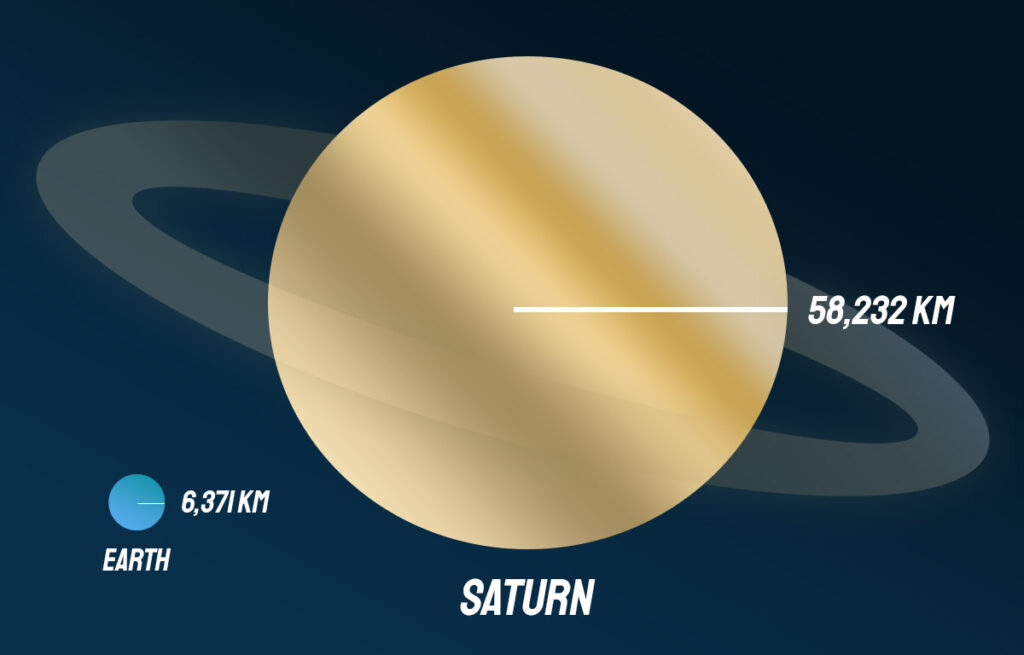
Jupiter is the biggest planet in the Solar system. It has a diameter of 143,000 kilometers (88,900 miles). For comparison, that is about 11 times bigger than Earth’s.
But Jupiter is not even close to being the biggest planet in the universe. Astronomers have discovered planets in other stars (called exoplanets) that are 2 to 6 times bigger than Jupiter.
However, there is a limit to how big a planet can be before it becomes so large that it starts to have the characteristics of a star. That limit is approximately 13 times the size of Jupiter.
Objects larger than that start to show signs of nuclear fusion like stars do, but they can’t sustain it. These objects are called brown dwarfs or “failed stars” and there is a debate on whether or not they should be called a planet.
5. There are planets with many moons
Planets are not the only objects that orbit around bigger objects. They also have a strong gravity so sometimes they’ll capture smaller rocky objects that orbit around them. We call these “natural satellites” or “moons”.
Earth has one moon, but other planets have many. Usually, the number of moons a planet has depends on its size although there are a few exceptions. For example, Mars is smaller than Earth and has two moons called Phobos and Deimos.
Moons come in many sizes, not all of them are as big as our own. As a matter of fact, the large majority of them are quite small, between 1 and 5 kilometers long (0.6 to 3 miles).
The planet with the most moons in the Solar system is Jupiter with 92 moons.
6. The orbit of a planet is circular
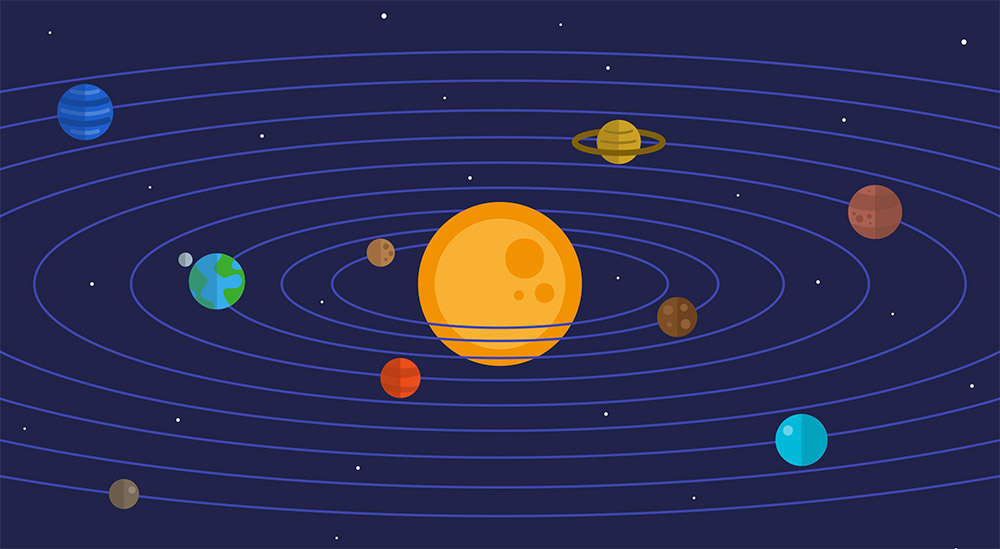
The path that planets follow around the Sun is circular, but it’s not a perfect circle. Because the gravity of other planets is also affecting each other, their orbit extends in some point, forming an ellipse.
Some orbits are more elliptical or “eccentric” than others. The planet with the most eccentric orbit is Mercury which is why it can sometimes get closer to Earth than Venus or Mars which are our neighbors.
The orbits of the planets never cross each other as they are all in a very well-balanced dance.
7. Planets are always moving
From our point of view, it seems like Earth is standing still, but that’s not the case. We only feel that the planet is not moving because we are moving along with it at all times.
Planets never stand still, they are moving all the time traveling across space and orbiting the Sun.
The Sun, by the way, is also moving. Everything in the universe is moving. All the time. Moons orbit planets, planets orbit stars, and stars orbit the center of their galaxies, which are also moving.
Isn’t that cool?
8. Planets are also rotating
Planets are also rotating on their own axis. This means that the surface of a planet is sometimes facing the Sun and as it rotates, it faces away from it. This is why day and night occur. Earth takes approximately 24 hours to complete one rotation.
Every planet rotates at a different speed. For example, Jupiter, despite being so big, is the planet that rotates the fastest. One day in Jupiter lasts only 10 hours.
Most planets rotate in the same direction as the Sun, which is also the same direction of their orbit (counter-clockwise). There are two exceptions, though. Venus and Uranus. Venus rotates very slowly in the opposite direction to the rest of the planets, and Uranus rotates almost sideways as if it was lying down. Both of their rotations are believed to be the result of these planets being impacted by other objects so big that the hit changed the direction.
9. Most planets are very hard to explore
The vast majority of planets that we know are not very friendly, not just to humans, but even to the ships that we have to try to explore them.
Just in the Solar system, here are the challenges we find
- Mercury is extremely hot. It has almost zero atmosphere which means it receives tons of solar radiation and solar winds directly.
- Venus is even hotter than Mercury. It has a thick atmosphere, but it is extremely toxic. Any ship we send would melt just a few minutes after reaching the surface.
- Jupiter, Saturn, Uranus, and Neptune don’t even have a surface so couldn’t “land” on them. And even if we went on a ship, the extreme temperatures, high pressures, and extremely fast winds would quickly destroy it.
As you can see, Mars is the only planet that we can explore with relative ease and that’s why it is the main focus of scientists and astronomers.
Things don’t seem to get better on planets outside the Solar system. The high majority of planets seem to share these inhospitable conditions.
10. The planet closest to the Sun is not the hottest
Mercury is the first planet in the Solar system and the one closest to the Sun. That could make us think that is the hottest planet because it receives the most heat from the Sun. And while that last part is true, it is not the hottest planet. That title goes to Venus.
Venus not only receives a lot of heat as well, but it also has an extremely dense atmosphere that traps it inside, heating up the surface. Temperatures in Venus can reach 475°C (900°F).
Venus went through an environmental effect called “greenhouse effect”. On a smaller scale, it is the same effect that scientists warn us about on Earth when they advocate taking care of the environment. If a greenhouse effect happens on Earth, the temperatures would rise, making it harder for us to live in it.
As you can see, studying other planets can serve as a warning to us and can help us learn more about our own. That is why astronomy is so important.
11. There are other planets that could be similar to Earth
Humans can’t live on any of the other planets of the Solar system. At least not without using space suits and building indoor environments that simulate the conditions of Earth.
But there are millions of other planets out there in the galaxy. One of the should be a little bit like Earth, right?
Thankfully, the answer is yes. And scientists have already found some.
Dozens of planets outside the Solar system that might be habitable to humans have been identified. They are all in the habitable zone of their stars and have a rocky surfaces. Some of them might even have oceans and liquid water.
It is still early to confirm any of these planets as habitable because they are so far away we can’t take a good look at them, but hopefully, as technology advances, we’ll be able to gather more information.
12. Planets have many layers
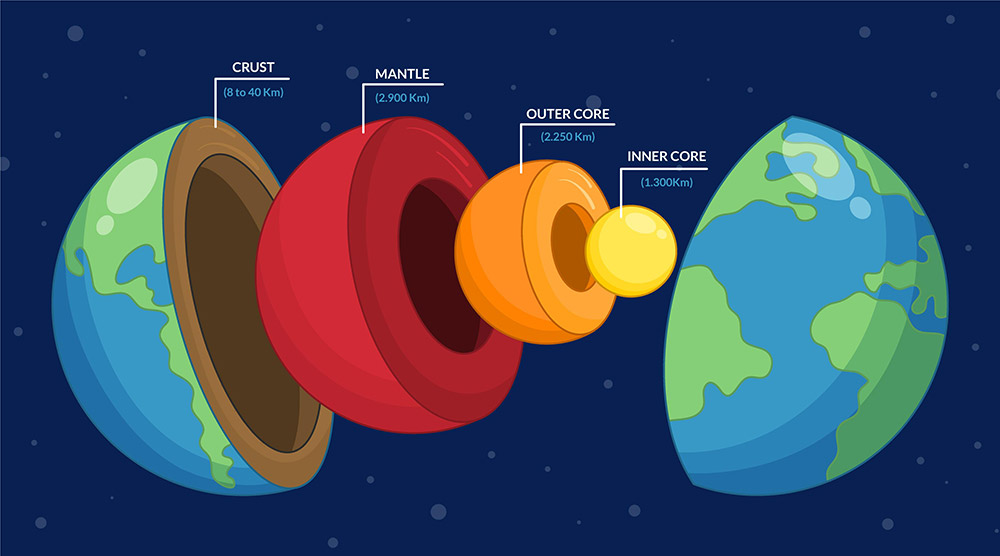
What we see on the outside is not all there is to planets. All of them have many different layers all the way down to their center. Each with its own composition and unique conditions.
Earth is the best example of this. Everything we see on the surface, including all the mountains, oceans, beaches, etc. is just on a very thin layer called the crust. Think of it like the skin of an apple. In that thin section is where we all live.
Below the crust, there is the mantle which is made out mostly of very hot rocks that move around because some melt under the high temperatues.
At the center lies the core, which is extremely hot and is made of rocks and some metals.
The atmosphere is also considered a layer of each planet, and it also has many sublayers.
Despite the outer layers of the planets being so different, the cores have many similarities. For example, the cores of Earth and Saturn are very similar in composition.
13. The planets were named after Roman gods
Ancient civilizations knew about the existence of the planets. At least the ones up to Saturn which are all visible without a telescope.
They thought they were “wandering” stars. As a matter of fact, the word planet comes from the Greek that means “wanderer”.
Every civilization had a different name for the planets, but the ones that we use today come from the Greek convention of naming them after mythological gods. Mercury was the god of communication and travel, Venus was the goddess of beauty, and Jupiter is the equivalent of Zeus, the god of thunder and most important figure in their myths.
When Neptune and Uranus were discovered in more modern times, many names were suggested, but the convention of naming them after mythological figures was kept and Neptune was named after the god of the seas, and Uranus after the personification of heaven.
14. Lots of planets have rings
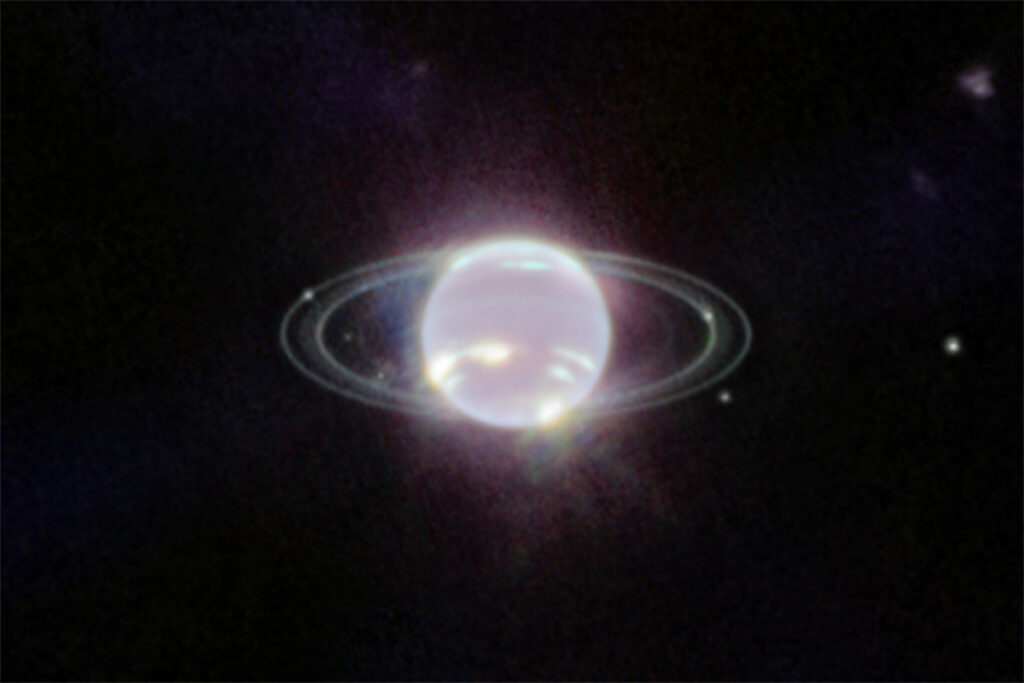
Saturn is usually associated with its rings because they are so big and prominent. They are so big they can even be seen using just a home telescope.
These rings are made out of dust and small pieces of rock.
But Saturn is not the only planet that has rings. All of the gas giants have rings too. They are just not as visible as Saturn’s. The only image we had until very recently of Neptune and Uranus’ rings was taken by the voyager spaceship that managed to take a few close-ups as it was passing by on its way out of the Solar system.
15. Other planets might have life
Earth is the only planet that we know of that can support life as we know it. But with so many planets out there that seems very lonely, doesn’t it?
We don’t know if there are other planets that could be home to other life forms, but it sure is a good idea to look for them in case we ever need to move out of Earth. It would also help us learn a lot more about ourselves.
Astronomers have identified Eartyh-like planets that would have a higher chance to develop and support some kind of life, but we are at the very early stages of that kind of research.
In the meantime, all we can do is continue looking for signs of current or past life in our own neighborhood. Mars and some moons in the solar system are candidates for this. It is believed that Mars has liquid water in the past which would greatly increase the chance for life to have developed at some point, even if it was just tiny organisms like bacteria.
Finding life on another planet would be the biggest scientific discovery in history so it’s definitely worth looking for it.

